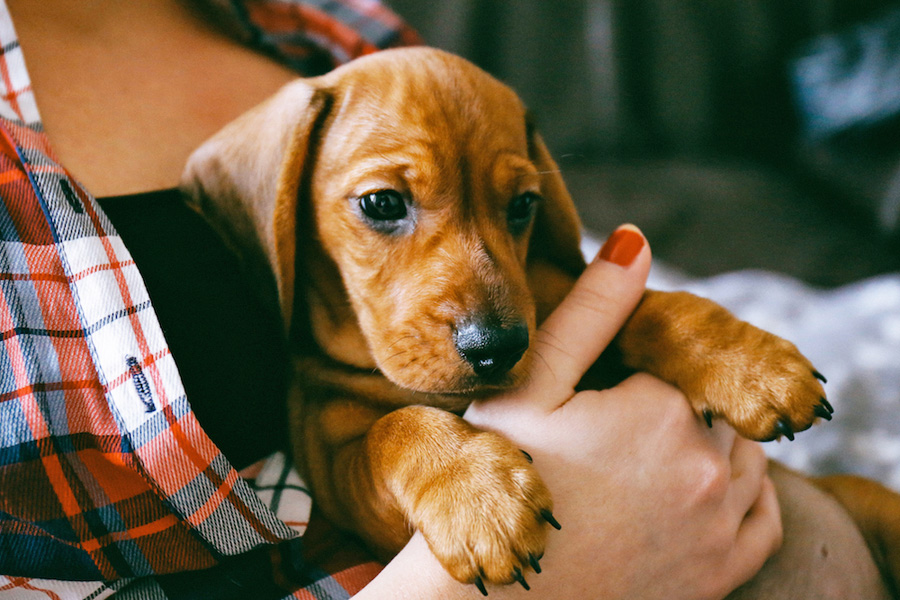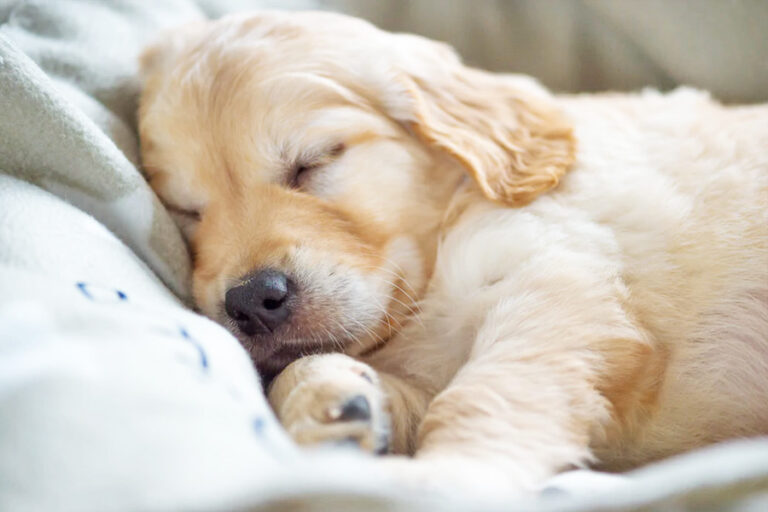Bringing Home A New Puppy – Complete Guide

Bringing a new puppy home is an exciting time, but it’s important to remember that it can be a big adjustment for the puppy!
Imagine being taken away from everything you know and placed in a completely unfamiliar environment. It can be scary and confusing for the little pup.
However, there are several things you can do to help ease this transition and help your new furry friend adjust to his new life.
Creating a calm and safe space for the puppy, establishing routines, providing plenty of positive reinforcement, and giving him lots of love and attention will go a long way in helping him feel secure and comfortable in his new home.
Follow these few simple tips from our experts to help your new puppy adjust to it’s new home. Remember to be patient and understanding as your puppy adapts to his new surroundings – with time and care, he will soon settle in and become a cherished member of your family.
1. Puppy Supplies
When bringing a new puppy into your home, there are several essential items you will need to ensure their comfort and well-being.
First and foremost, a crate or bed will provide them with a safe and cozy space to rest and sleep.
Food and water bowls are a must to keep them nourished and hydrated.
It is important to feed them healthy and complete puppy food, and consulting with your vet can help you determine the right food for their specific breed.
For outdoor activities, a collar, tag, harness, and leash are necessary for walks and outings. As you train your puppy, a harness may be more suitable than a collar.
If you plan on traveling frequently with your furry companion, a car restraint is crucial for their safety.
To aid in house training, puppy pads can be helpful, while poo bags are essential for cleaning up after them during walks outside.
By having these items ready, you’ll be well-prepared to welcome your new furry friend into your home.
2. Potty Training (Have Carpet Cleaner Ready!)
When it comes to potty training your furry friend, choosing the right spot is key.
Start by taking him to the outside area where you want him to go potty. This will help establish a routine and familiarize him with the designated spot. If he does relieve himself, be sure to use a command that you’ll stick to, such as “go potty” or whatever phrase you’re comfortable with.
Consistency is key in training, so using the same command every time will help him understand what is expected of him. And don’t forget to praise him for a job well done! Positive reinforcement goes a long way in encouraging good behavior and reinforcing the desired outcome.
With patience, consistency, and lots of praise, your furry friend will soon become a pro at using his chosen potty spot.
3. Dedicate Space
It is important to create a safe and puppy-proof area in your house where you can bring your new furry friend.
Many people make the mistake of allowing the puppy to freely explore the entire house, but this can be overwhelming for them. Instead, designate a specific area for them to familiarize themselves with. This could be where their food and water bowls are located or where their crate is placed.
By allowing them to get used to this smaller space first, you are helping them adjust gradually and prevent sensory overload. Once they feel comfortable in this designated area, you can gradually expand their exploration to other parts of the house.
4. Hello Puppy!
Introducing a new puppy to his new family members can be an exciting and joyous occasion. It is best to introduce each family member to the puppy individually, allowing him the opportunity to meet and become familiar with each person in a calm and quiet environment.
While it may be challenging to contain the excitement that comes with a new furry addition, it is important to give the puppy a chance to meet each family member without overwhelming him. This will help create a positive and comfortable experience for both the puppy and the family, fostering a strong bond between them.
So, take your time, be patient, and allow your new puppy to get acquainted with his new family members one at a time.
5. Happy Chewing (NO, NO, NOT THAT!)
Puppies are notorious for their love of chewing, but with the right approach, you can help redirect their chewing habits to appropriate and safe chew toys.
Providing your puppy with a variety of chew toys will give them an outlet for their natural chewing instincts and help save your furniture and belongings from destruction.
If you notice your puppy starting to chew on something they shouldn’t, quickly redirect their attention to their chew toy instead. Consistency is key when it comes to training your puppy not to chew on inappropriate items.
Additionally, it’s important to create a safe environment by keeping valuable or dangerous objects out of your puppy’s reach.
By following these tips and providing appropriate chew toys, you can successfully navigate life with a chewing puppy and protect both your belongings and your furry friend.
6. Sleepy Time
Creating a designated sleeping place for your puppy is essential for their well-being and development.
Contrary to popular belief, crates are not “doggie jail.” In fact, dogs prefer the security and safety of a den-like environment. Introduce your puppy to their crate or dog bed when they seem ready for a nap or at bedtime.
With some encouragement, the crate will become their safe place where they can retreat and feel secure. By providing a designated sleeping place, you are not only promoting healthy sleep habits but also creating a sense of comfort and security for your furry friend.
7. Set Rules
Start enforcing rules from the very beginning. It may seem early, but teaching your pup the house rules early on will lead to a more structured and consistent day, ultimately resulting in a happier and better-adjusted puppy.
When it comes to behaviors you want to discourage, like chewing or any other unwanted behavior, gentle redirection is key. Yelling or punishing will only scare and confuse your puppy, rather than teach them.
Keep in mind that they are still learning what is expected of them. Instead, focus on praising good behavior and redirecting unacceptable behavior as an effective way to help them learn and grow.
Bringing Home A New Puppy
When bringing a new pet into your home, it’s important to take things slowly and be patient. This will help them feel safe and secure in their new surroundings.
Providing lots of affectionate contact with the family, consistent rules and routine, rewards for good behavior, and gentle corrections for unacceptable behaviors will help them quickly learn their place in their new “pack.”
But perhaps most importantly, as they adjust to their new environment, you will establish a bond that will endure throughout their life. Building trust and creating a strong connection with your new pet is key to ensuring a happy and fulfilling relationship for both of you.
